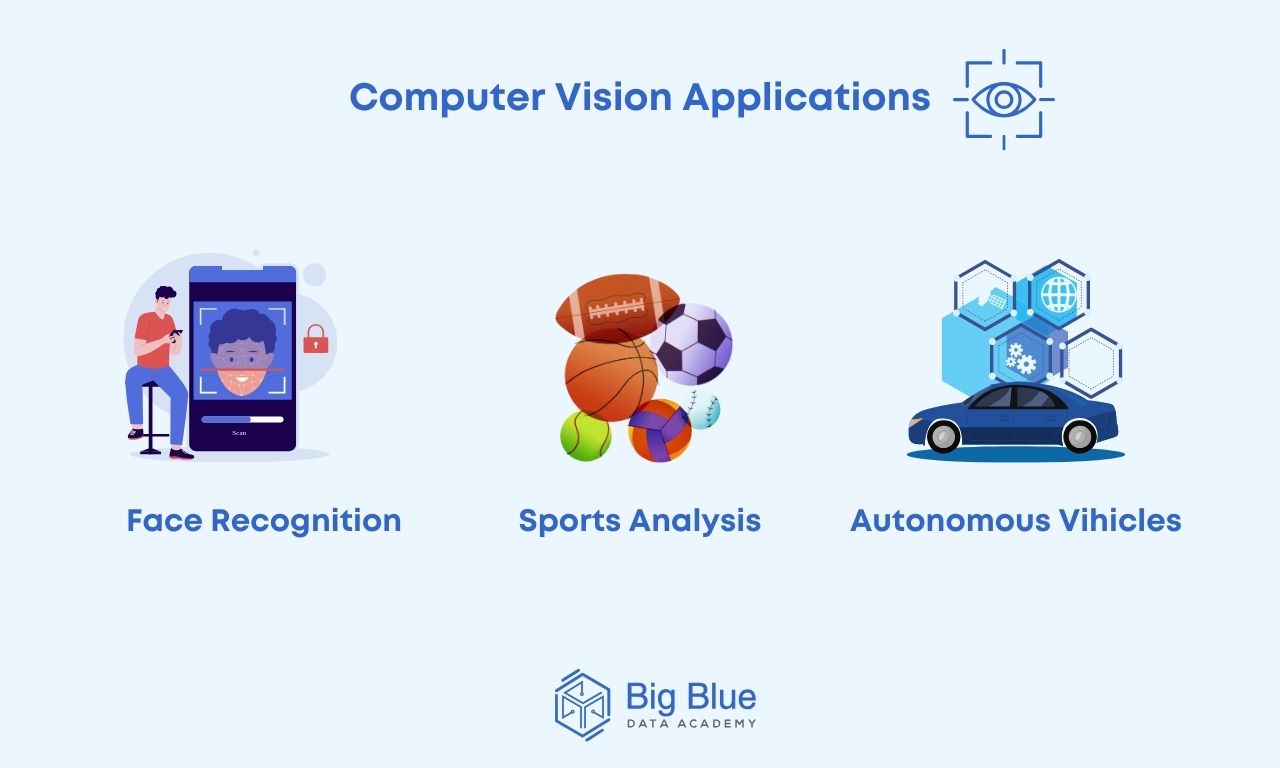Computer Vision: Definition and Applications (2023)
Machine learning and neural networks are utilized in a multitude of industries and fields by various professionals, including data scientists.
One of the fundamental applications of artificial intelligence is in teaching computers to perceive defects and issues before they impact various operations.
Scientists have been striving to develop ways for machines to see and comprehend visual data for the last approximately 60 years.
The results of this effort are remarkable, as computer vision is now a reality and continually evolving.
In today's article, we will explore:
What is computer vision?
How does it work?
What are its applications?
Let's start with a basic definition.
What is Computer Vision?
Computer vision is a field of artificial intelligence (AI) that trains and enables computers to extract essential information from various sources, such as digital images and videos.
Computers can then use this digital imagery, along with deep learning models, to accurately recognize, classify, and make recommendations based on this information.
The vast amount of data generated today has been a driving factor in the development of computer vision.
Following up, let's take a closer look at how computer vision functions.
How Does Computer Vision Work?
Computer vision requires enormous amounts of data.
Data analysis is constantly repeated until the machine can differentiate between objects and recognize images accurately.
To achieve this, two key techniques are employed: deep learning and Convolutional Neural Networks (CNN).
Machine learning algorithms allow the machine to automatically interpret visual data, distinguish between similar images, and even replace human involvement in tasks such as image recognition.
Furthermore, CNNs play a crucial role as they assist machine and deep learning models in the process of understanding and interpretation.
This is done by breaking down various visual elements into smaller segments that can be labeled.

These models are then trained on labeled datasets, where the model learns the relationship between input features and the desired output (e.g., object labels).
Convolutional Neural Networks (CNNs) are often used for computer vision tasks due to their ability to hierarchically learn features from raw pixel data.
Through iterations, the neural network refines its recommendations and begins to perceive, recognize, and categorize images, much like humans do with people and objects.
Continuing on, let's explore some fundamental applications of computer vision.
3 Main Applications of Computer Vision
Computer vision finds applications in a multitude of sectors and industries, including entertainment and transportation.

Let's delve a bit deeper into them.
Application #1: Face Recognition
Various face recognition programs developed use computer vision to identify individuals in photos.
Algorithms of computer vision recognize facial features in photos and then match these features with stored profiles.
For example, it is increasingly used for identity verification in social media apps, services, and consumer electronics.
For security reasons, facial recognition software is also used to detect criminals through surveillance footage by law enforcement agencies.
Application #2: Sports Analysis
Computer vision is also employed for analyzing sports events to enhance gameplay.
This is achieved through tracking the movements of various players, the trajectory of the ball, and identifying critical points for better and more systematic training strategies.
Application #3: Autonomous Vehicles
Another vital application of computer vision is in autonomous vehicles, where it aids in perceiving and navigating their surroundings.
Specifically, computer vision assists in detecting pedestrians, other vehicles, road signs, and traffic lights, allowing the vehicle to make real-time driving decisions.
In Summary
We have explored what computer vision is, how it works, and some of its main applications for better comprehension.
The field of computer vision and artificial intelligence is constantly evolving.
Thus, if you want to stay updated on the latest news regarding data science in general, follow us for more educational articles and we will keep you posted!


.jpg)